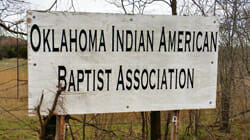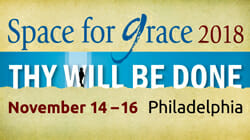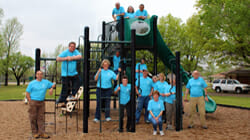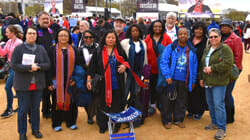ABHMS-supported children’s home stresses education, faith
Train children in the right way, and when old, they will not stray.
— Proverbs 22:6
Twelve-year-old twins Ezekiel and Emmanuel* epitomize what can happen when formerly homeless, abused or neglected children begin to reside in a nurturing, loving, Christian environment. At age 8, the brothers—both unable to read—came to live at American Baptist Home Mission Societies (ABHMS)-supported Murrow Indian Children’s Home, Muskogee, Okla. Only four short years later, the boys are thriving—and reading voraciously.
“They are constantly reading. They read big, thick chapter books that have 40-something chapters. They read them in just a few days,” says Mary Taylor, 29, the twins’ house mother. “They like to read series books. They will read through an entire series in a couple of weeks.”
Taylor and her husband, Calvin Taylor, 39, are the twins’ house parents. In addition to the twins, the Taylors are responsible for four other Native American boys as well as their own four biological children—two boys and two girls. All eat meals together at two large tables in the homelike cottage that features a kitchen, living room, dining room, game room and bedrooms.
“You develop a relationship because you’re there with them daily, constantly talking with them, caring for them, teaching them,” she says. “They’ve become like my own children. We’re just a big family. I want to see them all excel.”
Mary Taylor attributes the twins’ literacy success to the home’s focus on education. As with the twins’ previous house parents, the Taylors help the boys with homework.
“They would have to read to us out loud for 20 minutes a day,” she says. “So just taking that time with them, reading each day—as they slowly started to learn how to read—made huge improvements.”
She points out that not all families—biological or foster—place the same emphasis on learning. And teaching at Murrow, she notes, transcends the academic to include essential life skills that prepare children for successful, well-rounded adulthood.
“In some home environments, the parents don’t put the children’s learning as top priority,” she notes. “Here [at Murrow], we do focus on developing the entire child—letting them learn, putting their education as the top priority as well as learning how to take care of themselves—washing their laundry, cleaning their rooms.”
Faith is another focus at Murrow. Both former youth pastors, the Taylors attend church with the children on Sunday mornings, Sunday evenings and Wednesday evenings. They study the Bible with the children and participate in church outings with them.
“We talk with the kids about a relationship with Jesus and God,” she says. “And we pray with them.”
Mary Taylor says she and her husband have always been surrounded by many children.
“We would have our kids’ friends over and our nieces and nephews. We always had 8-12—sometimes 15—kids over at our house. At church, we’d take 20-something kids on outings,” she recalls. “God started talking to my husband and myself [about becoming house parents], and we just said, ‘If that’s what you want, God, then you just open the doors and let that happen.”
* Names have been changed to protect privacy.
Murrow history
For more than a century, ABHMS has been supporting Murrow Indian Children’s Home in caring for children from the Arapaho, Cherokee, Cheyenne, Chickasaw, Choctaw, Comanche, Creek, Kickapoo, Pawnee, Sac and Fox, and Shawnee nations.
The home is named for the Rev. Joseph Samuel Murrow, a Baptist missionary to Native Americans in what became Oklahoma. In the years after the Civil War, he opened a school, and he and his wife began taking into their home orphaned and homeless Native American children. With donations of land and money from individuals and Native American tribes, he eventually established what is now known as Murrow Indian Children’s Home.






